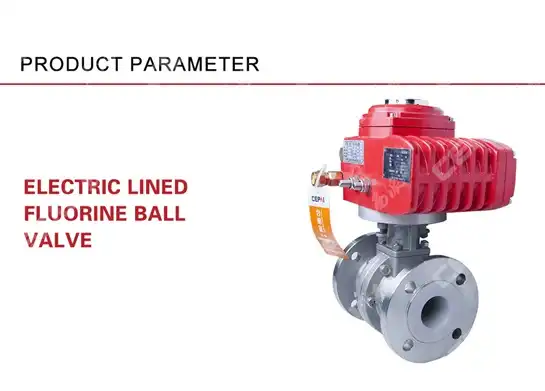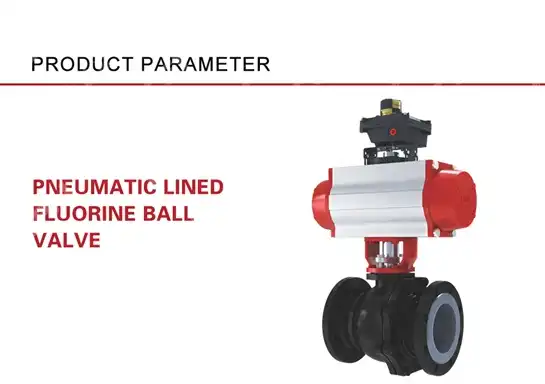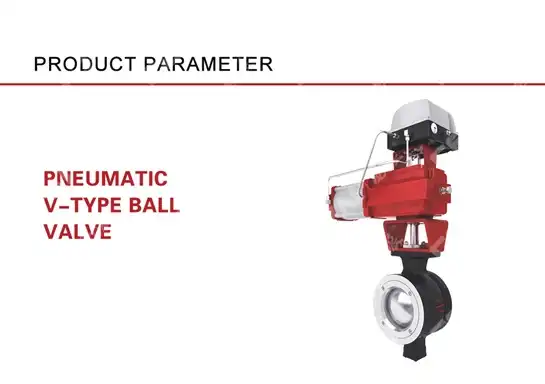How to Match Ball Valve Size and Pressure Rating with Your Needs?
Have you ever experienced costly system failures, unexpected downtime, or inefficient operations because your ball valve couldn't handle the pressure demands of your application? Selecting the wrong ball valve size or pressure rating can lead to catastrophic leaks, production losses, and safety hazards in critical industrial processes. This comprehensive guide reveals the essential factors you must consider when matching ball valve specifications to your operational requirements, helping you avoid expensive mistakes and ensure optimal system performance across petrochemical, oil and gas, power generation, and industrial applications.
Understanding Ball Valve Sizing Fundamentals
The foundation of proper ball valve selection begins with understanding how valve sizing directly impacts your system's hydraulic performance and operational efficiency. When engineers specify a ball valve, they must carefully evaluate the relationship between pipe diameter, flow rate requirements, and pressure drop characteristics to ensure the valve complements rather than restricts the system's capabilities.

-
Flow Rate Calculation and Cv Values
Flow coefficient, commonly known as Cv value, represents the volume of water at standard temperature that passes through a ball valve under specific pressure conditions. This critical parameter determines whether your selected ball valve can accommodate your system's flow requirements without creating unacceptable pressure losses. Industrial applications requiring high throughput demand ball valves with larger Cv values, while precision control applications may benefit from valves with lower coefficients. The relationship between flow rate, pressure differential, and Cv follows established engineering formulas that account for fluid properties including specific gravity, temperature, and viscosity. Professional engineers must calculate these values precisely, considering both normal operating conditions and peak demand scenarios to prevent undersizing that leads to excessive pressure drop or oversizing that reduces control accuracy.
-
Port Configuration Impact on Performance
Ball valve port design fundamentally affects flow characteristics and pressure drop across the valve assembly. Full port ball valves feature bore openings matching the connecting pipe diameter, providing unrestricted flow paths ideal for applications where minimal pressure loss is critical, such as mainline isolation in pipelines or processes requiring maximum throughput. Reduced port configurations, where the bore diameter is smaller than the pipe size, create intentional flow restriction suitable for throttling applications or systems where space constraints demand compact valve bodies. Standard port ball valves represent a compromise between these extremes, offering balanced performance for general industrial applications. The selection between these configurations depends on your specific operational priorities: full port designs minimize energy losses and maintain velocity profiles, while reduced port options provide cost savings and compact installations where moderate pressure drop is acceptable within system design parameters.
Critical Pressure Rating Considerations for Ball Valves
Pressure rating specifications represent the maximum allowable working pressure a ball valve can safely withstand under defined temperature conditions, forming the cornerstone of safe system operation. Understanding pressure class designations and their temperature dependencies prevents catastrophic failures and ensures long-term reliability in demanding industrial environments.

-
ANSI Class Ratings and Pressure-Temperature Relationships
The American National Standards Institute establishes standardized pressure-temperature ratings that define operational limits for ball valves across various service conditions. Class 150 ball valves typically accommodate pressures up to 285 PSI at ambient temperatures, making them suitable for low-pressure industrial applications in water treatment, HVAC systems, and general plant utilities. Class 300 ratings extend capacity to approximately 740 PSI at ambient conditions, serving medium-pressure applications in chemical processing and refinery operations. Class 600, 900, and 1500 ball valves address high-pressure requirements in oil and gas production, offshore platforms, and critical power generation facilities where system pressures routinely exceed 1,000 PSI. However, these maximum ratings decrease significantly as operating temperatures rise due to material property changes at elevated temperatures. Engineers must consult pressure-temperature curves provided by manufacturers to verify that their selected ball valve maintains adequate safety margins throughout the anticipated operating envelope, accounting for both steady-state conditions and transient pressure spikes during startup, shutdown, or emergency scenarios.
-
Material Selection for Pressure Applications
The body material of your ball valve directly determines its pressure-handling capability and chemical compatibility with process fluids. Carbon steel ball valves provide economical solutions for non-corrosive services at moderate pressures and temperatures, commonly deployed in steam systems, hydrocarbon processing, and general industrial applications. Stainless steel options, particularly 316 and 316L grades, offer superior corrosion resistance and maintain pressure ratings across wider temperature ranges, making them essential for chemical processing, pharmaceutical manufacturing, and offshore marine environments where chloride exposure threatens carbon steel integrity. Exotic alloys including Inconel, Hastelloy, and Monel address extreme service conditions involving highly corrosive fluids, elevated temperatures exceeding 800°F, or combinations of aggressive chemistry and high pressure that exceed conventional material capabilities. The internal ball element material must similarly match service requirements, with options ranging from chrome-plated carbon steel for abrasive slurries to ceramic coatings for extreme wear resistance and solid tungsten carbide for the most demanding erosive applications in sand production or catalyst handling services.
Matching Valve Specifications to Application Requirements
Successful ball valve selection requires systematic analysis of multiple operating parameters to ensure the chosen component integrates seamlessly within your system architecture while maintaining safety margins for unexpected conditions.
-
System Pressure Analysis and Safety Factors
Professional engineers must thoroughly characterize the complete pressure profile throughout your piping system, identifying not only normal operating pressures but also maximum allowable working pressure, potential surge pressures from pump trips or valve closures, and minimum pressures during startup or depressurization. The selected ball valve pressure rating should exceed maximum system pressure by an appropriate safety factor, typically 1.25 to 1.5 for well-understood processes, or higher margins for systems with uncertain pressure transients or critical safety implications. Downstream pressure drop calculations verify that the ball valve doesn't create excessive restriction causing pump cavitation, reduced throughput, or unacceptable energy consumption. Water hammer analysis becomes critical in liquid systems where rapid valve actuation could generate destructive pressure waves exceeding static design pressures by factors of five or more. Thermal expansion effects must be evaluated for isolated line segments where trapped fluids could generate enormous pressures as temperatures rise, potentially exceeding the ball valve rating despite nominal system pressures remaining well within acceptable ranges during normal operation.
-
Temperature Considerations in Valve Selection
Operating temperature profoundly influences both pressure ratings and material performance characteristics throughout the ball valve assembly. Most pressure class ratings assume ambient temperature conditions around 70°F, with allowable pressures decreasing according to published derating curves as temperatures rise. A Class 300 carbon steel ball valve rated for 740 PSI at ambient temperature might only safely handle 500 PSI at 500°F due to reduced material strength at elevated temperatures. Cryogenic applications below -20°F introduce brittle fracture concerns requiring impact-tested materials and special seat designs maintaining sealing integrity as components contract. Thermal cycling between temperature extremes generates expansion and contraction cycles that stress valve components, potentially causing premature seat wear, stem packing leakage, or body joint separation if materials with mismatched thermal expansion coefficients are combined. High-temperature services above 450°F demand specialized packing materials, often graphite-based, and may require extended bonnets to keep packing away from hot process fluids while maintaining stem sealing. The ball valve body-to-ball clearance must accommodate thermal expansion without binding while preventing excessive leakage when cold, requiring careful engineering for applications spanning wide temperature ranges.
-
Flow Characteristics and Velocity Limits
Fluid velocity through your ball valve directly impacts erosion rates, noise generation, and potential for damaging cavitation or flashing phenomena. Liquid velocities exceeding 15 feet per second accelerate erosion of valve internals, particularly at seat contact points where high-velocity jets form during throttling service. Gas and vapor applications tolerate higher velocities, but exceeding sonic velocity at the valve throat creates destructive shock waves and extreme noise levels potentially damaging downstream equipment or exceeding workplace safety standards. Cavitation occurs when liquid pressure drops below vapor pressure as fluid accelerates through the valve restriction, forming vapor bubbles that violently collapse downstream causing pitting damage, noise, and vibration. Multi-stage pressure reduction or specialized trim designs mitigate cavitation in high-pressure-drop services, though ball valves are generally poor choices for severe throttling applications where globe or control valves prove superior. Flashing, where liquid converts to vapor without subsequent condensation, creates two-phase flow with different sizing requirements than single-phase liquid or gas service. Proper ball valve sizing accounts for these phenomena, ensuring velocities remain within acceptable limits while providing required flow capacity with minimal pressure penalty.
Advanced Selection Criteria for Industrial Ball Valves
Beyond basic sizing and pressure ratings, sophisticated industrial applications demand consideration of additional factors ensuring reliable long-term performance in challenging service conditions.
-
Seat Design and Sealing Technology
Ball valve seat configuration dramatically affects sealing performance, operating torque, and service life across different applications. Soft-seated designs employing PTFE, RTFE, or other polymer seats provide bubble-tight shutoff suitable for isolation service, though temperature limitations typically restrict use below 450°F and soft materials wear quickly in abrasive services. Metal-seated ball valves using hardened stainless steel, Stellite, or tungsten carbide seat rings tolerate extreme temperatures exceeding 1,000°F and resist erosion from abrasive slurries or erosive gases, though sealing performance typically reaches only Class IV or V tightness compared to Class VI for soft seats. Spring-loaded seats maintain contact pressure against the ball throughout thermal cycling and wear progression, extending service intervals compared to fixed seats that develop leakage as components wear. Double-piston-effect seats isolate the ball from downstream pressure, reducing operating torque and permitting smaller actuators for automated applications. Seat injection ports allow emergency sealant injection if seats become damaged during operation, providing temporary leak mitigation in critical services where immediate shutdown is unacceptable. The seat material selection must consider not only pressure and temperature but also chemical compatibility with process fluids, potential for polymer degradation from radiation exposure, and permeation resistance for hazardous gases including hydrogen, which penetrates many polymers causing blistering and failure.
-
Actuation Requirements and Torque Calculations
Operating torque requirements determine whether manual operation remains practical or powered actuation becomes necessary for your ball valve installation. Torque increases with valve size, pressure differential, seat preload, friction coefficients, and ball surface condition, with typical values ranging from a few foot-pounds for small valves to thousands of foot-pounds for large high-pressure installations. Manual operation remains feasible for valves up to 6 inches in low-pressure services, but larger sizes or high-pressure differentials demand pneumatic, hydraulic, or electric actuators providing sufficient torque with appropriate safety factors for reliable operation. Pneumatic actuators offer rapid response and explosion-proof operation suitable for process control and emergency shutdown applications in hazardous areas, though air supply requirements and susceptibility to freezing in moisture-laden air must be addressed. Electric actuators provide precise positioning and remote operation capability ideal for automated systems requiring frequent operation or throttling service, despite higher costs and potential ignition hazards in explosive atmospheres without proper enclosures. Hydraulic actuators deliver maximum force for extremely large valves or high-pressure applications where pneumatic systems cannot generate adequate torque, trading simplicity for hydraulic power unit requirements and potential environmental concerns from hydraulic fluid leakage.
Conclusion
Successfully matching ball valve size and pressure rating to your application requires comprehensive analysis of flow requirements, system pressures, operating temperatures, fluid properties, and service conditions. By systematically evaluating these factors and selecting ball valves with appropriate specifications, you ensure reliable performance, prevent costly failures, and optimize operational efficiency across your industrial processes. The integration of proper sizing methodologies with rigorous pressure rating verification creates robust systems meeting both current demands and future expansion requirements.
Cooperate with CEPAI Group Co., LTD.
When your operations demand superior ball valve performance backed by world-class engineering expertise, CEPAI Group Co., LTD. delivers comprehensive solutions from our advanced manufacturing facility in Jiangsu Province, China. As a national high-tech enterprise and specialized small giant company, we combine cutting-edge intelligent manufacturing with rigorous quality systems including API certifications, ISO compliance, and SIL-certified ball valve technology proven in demanding petrochemical, oil and gas, and power generation applications worldwide. Our team of engineers provides expert pre-sales technical consultation to match the perfect ball valve size and pressure rating to your specific requirements, supported by customized solutions, installation support, and comprehensive after-sales service ensuring maximum uptime and performance throughout your equipment lifecycle.
Whether you need a China Ball Valve factory capable of producing high-precision components or a trusted China Ball Valve supplier offering competitive Ball Valve prices without compromising quality, CEPAI Group stands ready as your preferred China Ball Valve manufacturer. Our extensive product range includes High Quality Ball Valves with SIL certification, available for Ball Valve wholesale distribution or individual project requirements. With Ball Valves for sale meeting international standards including API 6A, API 6D, and comprehensive testing protocols, we guarantee products that exceed industry expectations. Our 156 million yuan investment in intelligent manufacturing creates the Asia Pacific region's longest high-precision flexible production line, ensuring consistent quality and rapid delivery for your critical applications.
Connect with our technical experts today at cepai@cepai.com to discuss your ball valve requirements and discover how CEPAI's combination of advanced technology, proven expertise, and customer-focused service creates lasting partnerships. Whether you face challenging high-pressure applications, require specialized materials, or need custom valve solutions, our team provides responsive support matching your schedule and specifications. Click to bookmark this guide for future reference when evaluating ball valve specifications, and contact CEPAI Group Co., LTD. for competitive quotes backed by certifications from PetroChina, Sinopec, CNOOC, and leading international engineering firms.
References
1. American Petroleum Institute, "API Specification 6D: Pipeline and Piping Valves," 24th Edition, American Petroleum Institute Standards Department
2. Crane Technical Paper, "Flow of Fluids Through Valves, Fittings, and Pipe," Crane Company Engineering Division
3. Smith, P. and Zappe, R.W., "Valve Selection Handbook: Engineering Fundamentals for Selecting the Right Valve Design for Every Industrial Flow Application," Elsevier Publishing
4. American Society of Mechanical Engineers, "ASME B16.34: Valves - Flanged, Threaded, and Welding End," ASME Standards Committee
_1746598557316.webp)
Get professional pre-sales technical consultation and valve selection services, customized solution services.

About CEPAI


